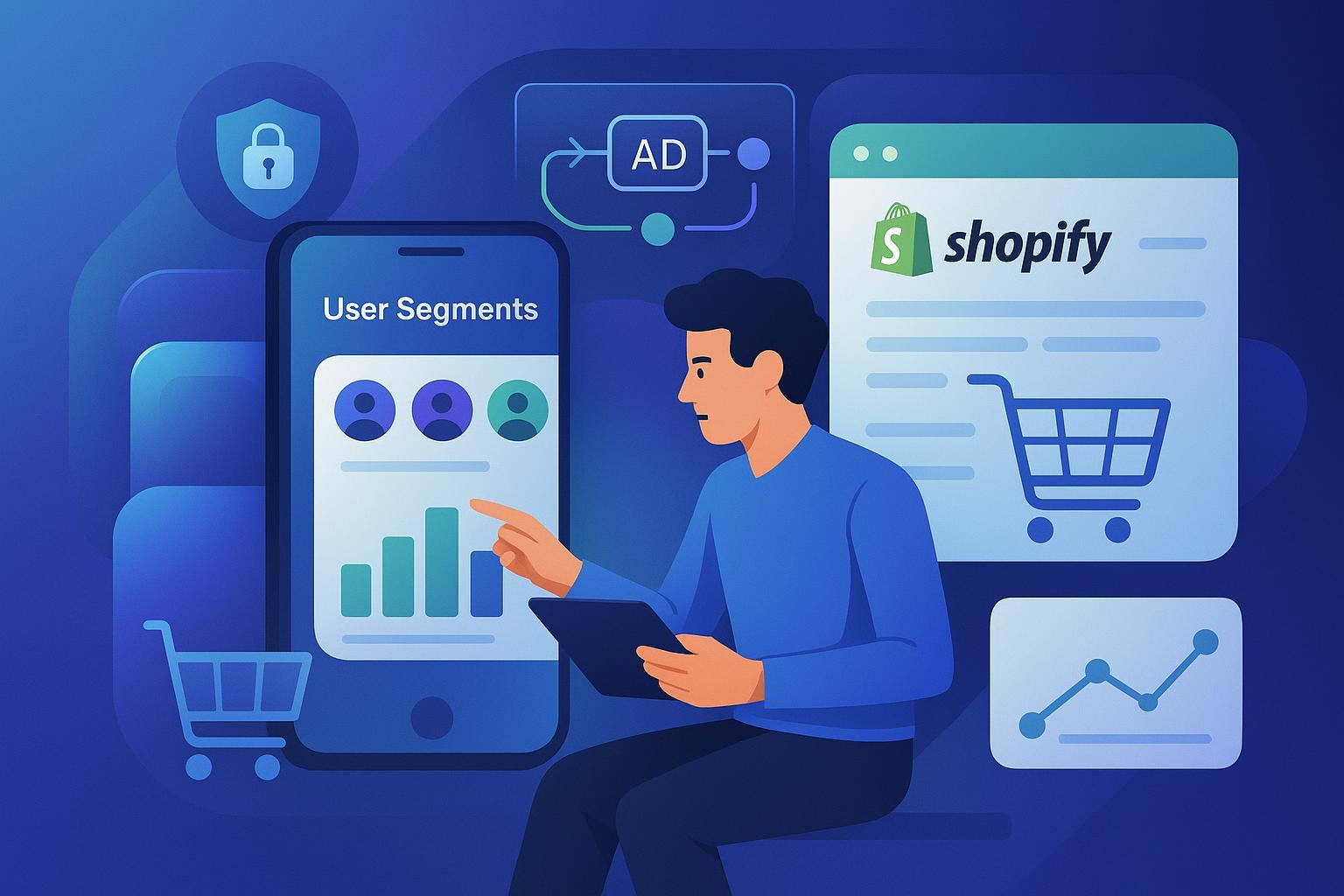Harnessing Mobile Programmatic Retargeting: Strategies for Enhanced User Engagement (2025)

Introduction: The 2025 Mobile Retargeting Reality for E-Commerce
Mobile is now the undisputed core of e-commerce, driving over 73% of transactions in 2025 (Business of Apps). Yet, with privacy walls rising, cross-device journeys fragmenting, and user attention at a premium, successful mobile programmatic retargeting demands more than recycled tactics. After a decade wrestling these changes for e-commerce and DTC brands, my guiding principle is simple: effective retargeting isn’t about blanket reach—it’s about precise, privacy-first orchestration that respects intent and delivers real business outcomes.
The good news? The rise of advanced analytics and platforms like Attribuly has revolutionized what’s possible for practitioners. Below, I’ll share the exact frameworks, playbooks, and operational reversals that separate market leaders from “me-too” retargeters. Every strategy comes straight from campaigns for Shopify and DTC brands, embedded with Attribuly’s latest innovations. Expect hands-on detail, honest trade-offs, and a toolkit you can put to use today.
1. Atomic User Segmentation: The Foundation of Modern Retargeting
No mobile retargeting campaign beats segmentation. Campaigns targeting one-size-fits-all audiences now bleed spend and underperform—especially post-iOS ATT and cookie deprecation (Adjust Guide).
Practical Framework: Building Hyper-Granular Segments with Attribuly
Approach:
- Atomic segmentation: Break users down by behavioral triggers, funnel stage, value, and predicted intent.
- Attribuly in action: Use server-tracked events to auto-build segments like:
- Cart abandoners with more than $100 in cart
- Browsers with high-view frequency but no purchase
- Lapsed buyers (last purchased >60 days)
- High-LTV, frequent shoppers
- Dynamic triggers: Set up live rules in Attribuly (e.g., “Exited checkout >3x in 7 days” → add to Segment X)
Checklists for Shopify/E-commerce:
- Segment cart abandoners by cart value and product category
- Track browse abandonment vs. category browse depth
- Identify lapsed and churn-risk cohorts
- Cross-sync audiences with Shopify, Meta, TikTok, and Google using Attribuly’s integrations
Operational Win: Brands using atomicity have seen up to 9.4x ROAS and as much as 49% sales lift (ECG Agency).
Pitfall & Fix: Do not over-segment into tiny, unscalable audiences—balance granularity with minimum spend efficiency. Attribuly’s built-in AI assistant can flag unviable segment splits before launch.
2. Personalized Creative at Scale: Dynamic Messaging & Deep Linking
The secret to retargeting engagement is message (and offer) fit. Static campaigns produce creative fatigue and lower conversion, especially for high-frequency mobile audiences.
Dynamic Creative Execution
- Attribuly’s creative automation allows:
- Ad variations tied to segment triggers (E.g., dynamic product images for cart abandoners)
- Personalized offers (unique coupon, shipping perks) based on past behavior
- Deep linking that retargets users not just to homepages, but direct to product/cart/app checkout
- Automated creative A/B tests: Attribuly can rotate creatives, flag fatigue, and auto-optimize winners
Sample Workflow:
- Build segment (“Browsed Collection X, no Purchase”) in Attribuly
- Launch creative set with product deep links, personalized banners, urgency messages
- Set fatigue alerts: Attribuly pauses assets with ROAS drop or ad frequency >7/week
Common Pitfalls:
- Ignoring localization (leads to wasted budgets abroad)
- Recycling stale assets (Attribuly’s creative fatigue alerts help avoid this)
Checklist:
- Every segment gets a unique creative variant
- Deep links are mapped to audience intent stage (e.g., collection vs. checkout)
- Creative frequency and CTRs monitored weekly
3. Frequency, Timing, and Channel Mix: Ad Fatigue Prevention and Precision
Fact: Overexposure kills profits. While 5–7 retargeting impressions/user/week is optimal (Bigabid Programmatic Trends), this is not a rule for every funnel stage or channel. Balance is crucial.
Channel Orchestration in Practice
- Attribuly’s omnichannel features support:
- Sync >3 retargeting channels (programmatic display/video, email via Klaviyo, SMS/push)
- Automated frequency capping across all platforms
- Channel exclusion: Users who convert via one channel are suppressed on others
- Timing insights: AI analytics recommend send times based on device, prior engagement, and timezone
Real-World Example:
- A Shopify DTC brand leveraged Attribuly’s rules: after 4 mobile ad exposures without click, switch to personalized email (result: ad fatigue dropped 25%, conversion rate rose 18%)
Pitfall: Relying entirely on one channel (e.g., Meta or SMS) leads to saturation and opt-outs.
Checklist:
- Frequency caps by funnel stage
- Cross-channel user suppression rules active
- Weekly review of channel ROI for shifts
4. Privacy-First Data & Server-Side Tracking: Measurement, Consent, and Futureproofing
Retargeting is now only as good as your data’s durability and compliance. iOS ATT, Google Privacy Sandbox, and SKAN 5.0+ have made server-side event tracking non-negotiable for true measurement and personalized engagement (Basis Programmatic Trends).
Attribuly’s Server-Side Tracking Advantages
- Privacy and compliance: All events are logged directly from your e-commerce backend—no dependence on 3rd-party cookies or vulnerable browser pixels
- Identity resolution: Attribuly stitches sessions and conversions across device/app/browser using encrypted IDs
- Cookieless accuracy: Attribution and audience-building power remain strong post-cookie
- Consent workflows: Attribuly manages consent state, ensuring only legitimate data flows into campaigns
Quick Setup Flow for Shopify:
- Install Attribuly (code-free)
- Activate server-side event logging
- Enable consent management and custom privacy policies
- Sync to Meta/Google/TikTok server event APIs
Failure Story: A DTC brand running pixel-only campaigns saw attribution variance over 30% after iOS 17—switching to Attribuly’s server setup cut measurement error to below 5% and restored campaign confidence.
Checklist:
- Server-side tracking fully deployed
- Consent given for all user events
- Attribution data reviewed weekly for completeness
5. AI and Machine Learning: Dynamic Optimization and Automation
The frontier is not just analytics—it’s AI-powered campaign automation. Attribuly’s AI assistant moves beyond reporting to actual campaign management.
How Attribuly’s AI Supercharges Engagement
- Predictive segmentation: Suggests new segments with higher conversion probability based on trend analysis
- Smart creative rotation: Pauses creatives before fatigue, scales winners, and recommends copy/image variants
- Bid and budget automation: Real-time adjustment by audience, spend velocity, and channel ROI
- A/B and multivariate testing: Automated across programmatic, email, SMS—results surfaced in an actionable dashboard
Benchmarks:
- Brands using AI optimization see 14%+ lift in conversions and 8–20% ROAS improvement (Matrix Marketing Group)
Checklist:
- Review AI optimization suggestions weekly
- Apply smart creative rotation rules
- Run at least one new AI-suggested test each month
6. Measuring Impact: Multi-Touch, Incrementality, and Real ROI
Too many marketers claim improved CTRs—few can prove incrementality and business lift. Multi-touch attribution (MTA), holdout groups, and incrementality experiments are now best practice (AppSamurai User Acquisition).
Attribuly’s Attribution and Measurement Toolkit
- Multi-touch attribution (MTA): Linear, U-shaped, or data-driven models show true role of each touch
- Incrementality: Built-in holdout testing so you can isolate retargeting’s real lift (15–25% is strong)
- Dashboard clarity: Consolidated cross-channel reporting (programmatic, email, SMS, push, CTV, DOOH, etc.)
- Custom metrics: Track ROAS, LTV, actual conversions, and segment-by-segment results
Vanity trap warning: CTR alone is a misleading metric—focus on conversion, retention, and LTV as primary north stars.
Checklist:
- Run at least one holdout/incrementality test per quarter
- Action insights via dashboard, not channel ad managers
- Prioritize outcome metrics over engagement-only data
7. Cart Abandonment: Reducing Waste, Maximizing Return
Abandonment is the classic retargeting use case—but the old method (discount, discount, discount) is increasingly ineffective, and often damaging to brand equity and margin.
Gentle, Behavioral Retargeting—Attribuly Playbook
- Step 1: Segment abandoners by cart value, urgency, and prior history
- Step 2: Trigger timed mobile/interstitial ad, followed by channel mix (e.g., push, SMS, email)
- Step 3: Message sequence:
- Reminder (no offer)
- Product social proof/user review or FAQ
- Personalized incentive only for high-value/sensitive segments
- Step 4: Suppress all retargeting for completed checkouts across all platforms (Attribuly auto-handles this via server sync)
Results: Brands shifting to behavioral, multi-touch abandonment retargeting (not just discounting) have seen 16–27% higher recovery rates (GoAudience) and better margins.
Checklist:
- No more than one incentive per user per campaign
- Product-context creative always precedes offer messaging
- Cross-channel suppression on completion active
8. Troubleshooting and Next-Gen Strategies: Learning from Real Campaigns
Even the pros mess up—fatigue, compliance misses, and measurement gaps remain common. The difference is in how quickly you recover.
Common Pitfalls & Rapid Resolutions
- Pitfall: Ad fatigue & creative rot
- Fix: Use Attribuly fatigue alerts to monitor low-converting creatives; automate rotation/replacement
- Pitfall: Overlapping/duplicated spend across channels
- Fix: Activate cross-channel exclusion and attribution controls in Attribuly
- Pitfall: Compliance/data privacy slip
- Fix: Audit consent flows; ensure Attribuly’s privacy settings match latest iOS/Android/Shopify rules
- Pitfall: Unclean attribution (legacy pixels only)
- Fix: Complete server-side migration and test events with real-time dashboards
Futureproofing: Stay abreast of SKAN, Google Privacy Sandbox, and emerging regional data rules. Attribuly updates platform integrations and training to reflect shifts as they develop.
Toolkit / Readiness Checklist:
- Attribuly server-side + Shopify integration live
- All core retargeting segments built and validated
- Omnichannel sync & suppression rules set
- AI-powered optimization active
- Holdout/incrementality test scheduled
Conclusion: Raising Your Mobile Retargeting Game—Today, Not Tomorrow
Effective mobile programmatic retargeting in 2025 requires commitment to precision, privacy, and continuous improvement. With platforms like Attribuly, e-commerce brands and marketers can deploy best-in-class measurement, atomic segmentation, and omnichannel workflows at scale—futureproofing campaigns and elevating ROI.
Ready to level up your mobile retargeting? Visit Attribuly for a deeper dive and to schedule your product demo—see firsthand how next-generation analytics and automated retargeting can transform your user engagement and lifetime value.
References: All key data, frameworks, and industry developments are cited inline. For a full source appendix and additional checklists, see enhancement and research plans above.
